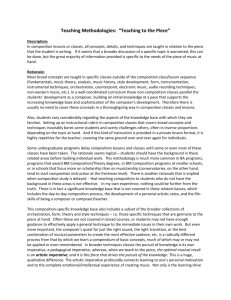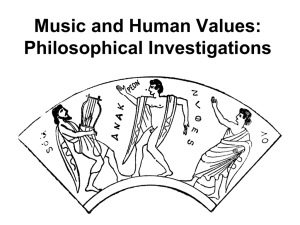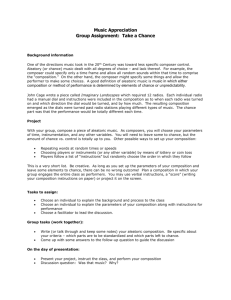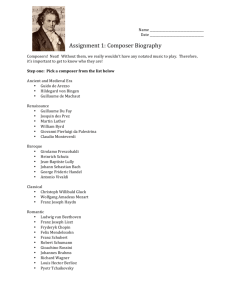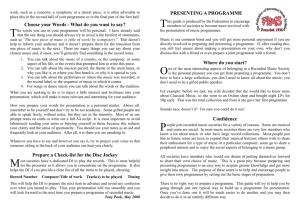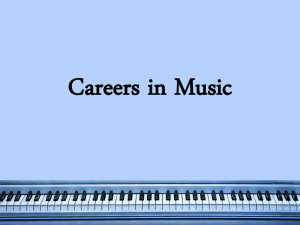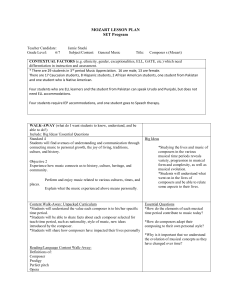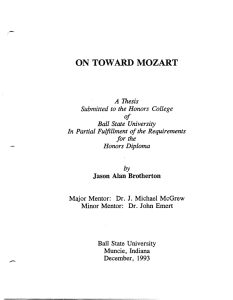Chapter 7 Music Review: Key Terms, Ideas, and Critical Thinking
advertisement
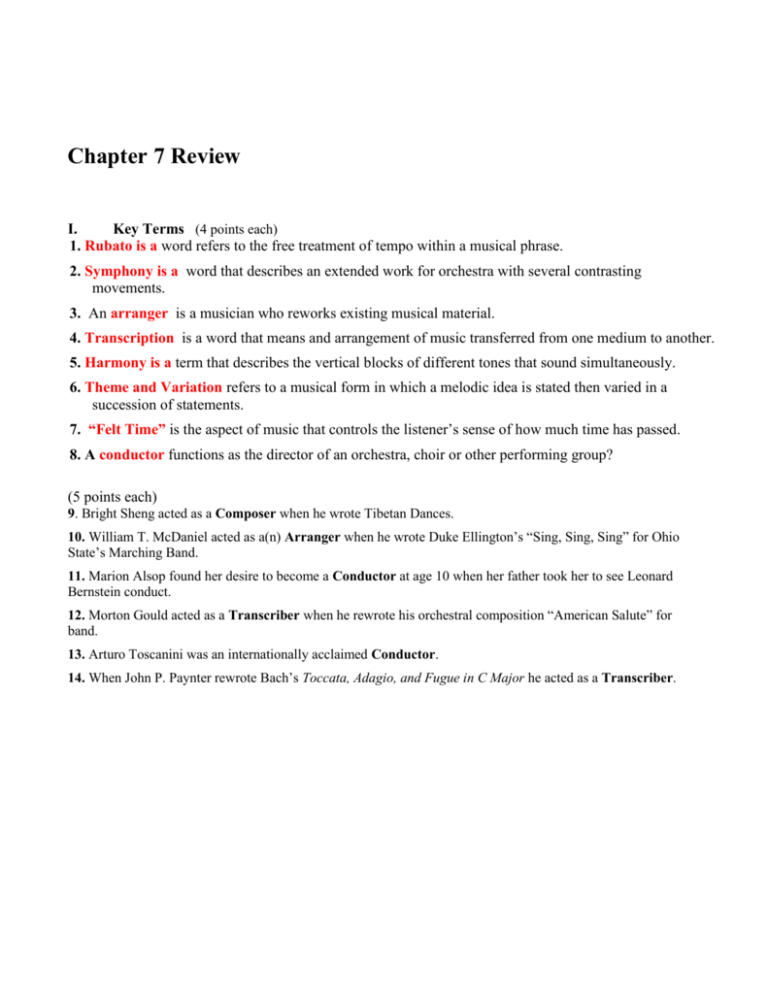
Chapter 7 Review I. Key Terms (4 points each) 1. Rubato is a word refers to the free treatment of tempo within a musical phrase. 2. Symphony is a word that describes an extended work for orchestra with several contrasting movements. 3. An arranger is a musician who reworks existing musical material. 4. Transcription is a word that means and arrangement of music transferred from one medium to another. 5. Harmony is a term that describes the vertical blocks of different tones that sound simultaneously. 6. Theme and Variation refers to a musical form in which a melodic idea is stated then varied in a succession of statements. 7. “Felt Time” is the aspect of music that controls the listener’s sense of how much time has passed. 8. A conductor functions as the director of an orchestra, choir or other performing group? (5 points each) 9. Bright Sheng acted as a Composer when he wrote Tibetan Dances. 10. William T. McDaniel acted as a(n) Arranger when he wrote Duke Ellington’s “Sing, Sing, Sing” for Ohio State’s Marching Band. 11. Marion Alsop found her desire to become a Conductor at age 10 when her father took her to see Leonard Bernstein conduct. 12. Morton Gould acted as a Transcriber when he rewrote his orchestral composition “American Salute” for band. 13. Arturo Toscanini was an internationally acclaimed Conductor. 14. When John P. Paynter rewrote Bach’s Toccata, Adagio, and Fugue in C Major he acted as a Transcriber. II. Main Ideas Directions: Write a brief response on the lines provided (12 points) 15. What elements of music do composers consider when composing a new work? Composers make decisions about form, melody, timbre, rhythm and meter. 16. Give an example from this chapter of a composer converting a classic for popular appeal? John Lewis transformed a Bach prelude into a contemporary Jazz Piece, or Eric Carmen turned a Rachmaninoff melody into a popular song. 17. Why does a composer often begin by choosing a works form? Form is the structure and design of a composition. It gives shape and direction. Form is a function of the composers skill and creativity. It serves as a road map and incorporates repetition, contrast, unity and variety. By choosing a works form, the composer is creating the infrastructure over which the emotion or melody is placed. 18. What are the responsibilities of a conductor? Conductors select the music, rehearse the ensemble, maintain the beat with their baton, and give visual cues to help musicians perform as a group, facilitate the performers interpretation of the music, and they decise expressive matters like tempo, dynamics, spirit and phrasing. III. Critical Thinking Directions: Respond to the following in paragraph form, using complete sentences. Write your answers on a separate sheet of paper (26 points) 19. Describe the difference between a composer, arranger and a transcriber. A composer creates a totally new piece. An arranger manipulates notes, harmonies, rhythms and other musical elements in an existing composition. A transcriber assigns the music to a different set of players or singers, changing the medium of the music, but not the arrangement of the material. 20. What are some ways that a composer can alter a theme to create a variation? Ways of creating variations on a theme include changing the key, tempo, rhythm, meter, texture, timbre, melody, harmony or style.
